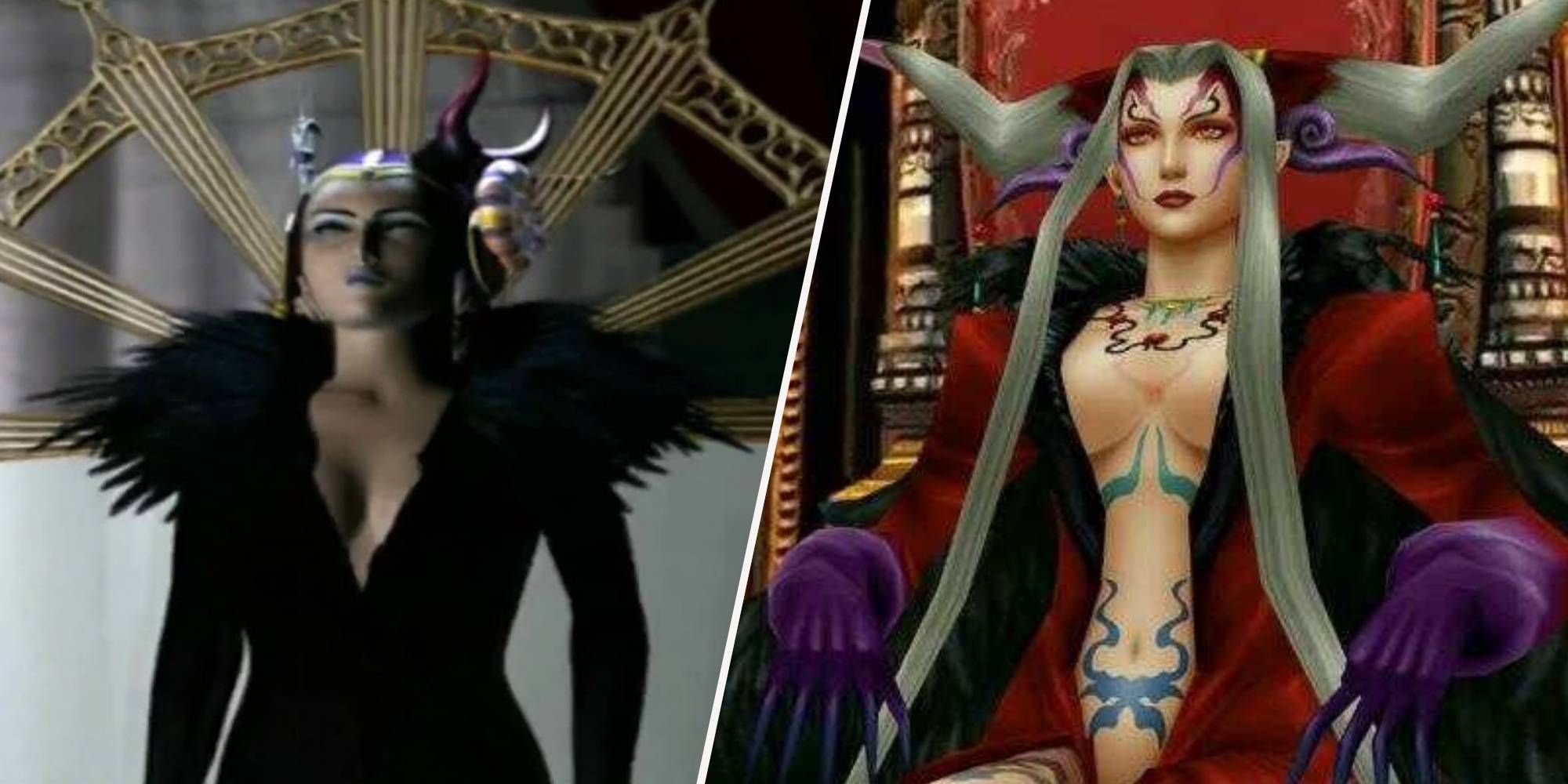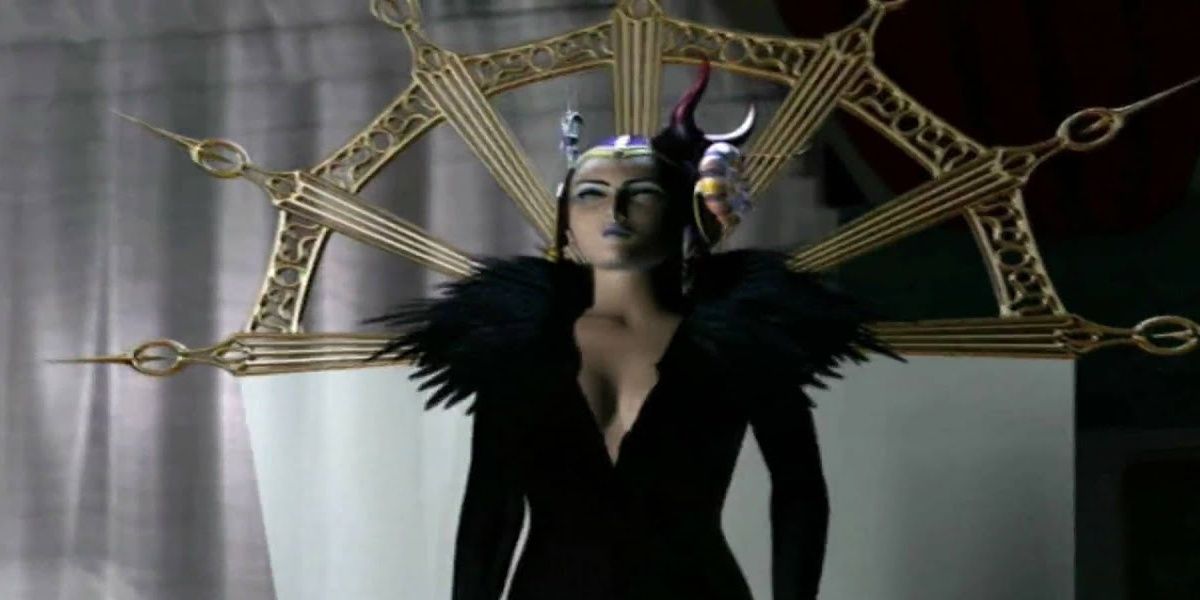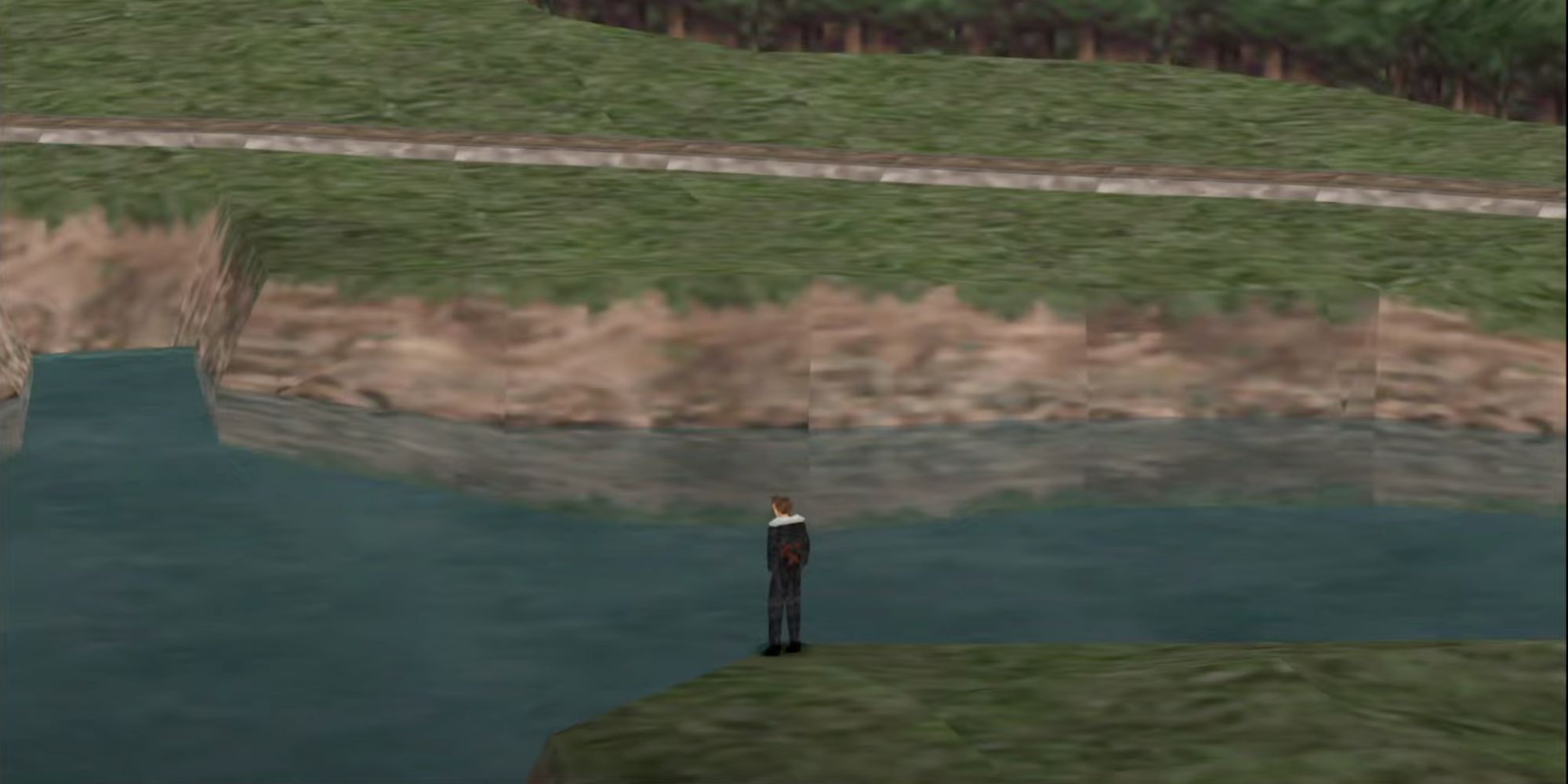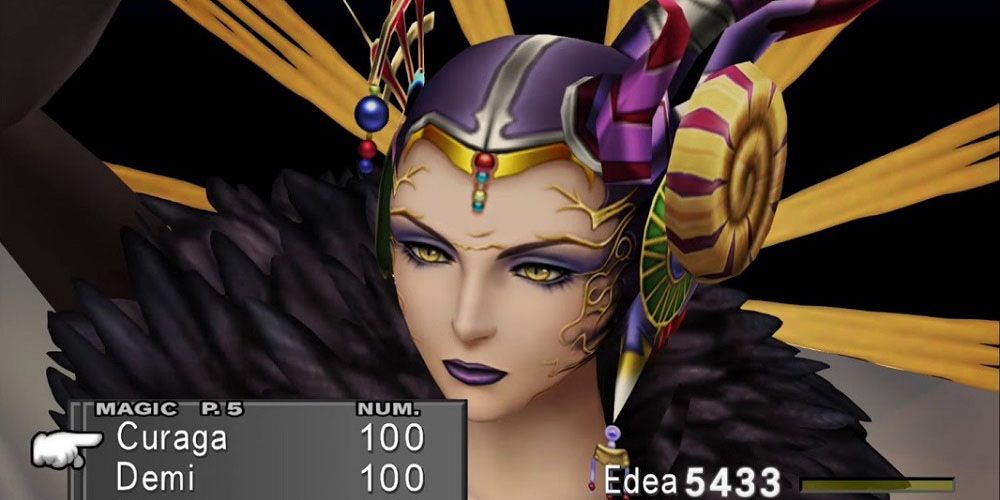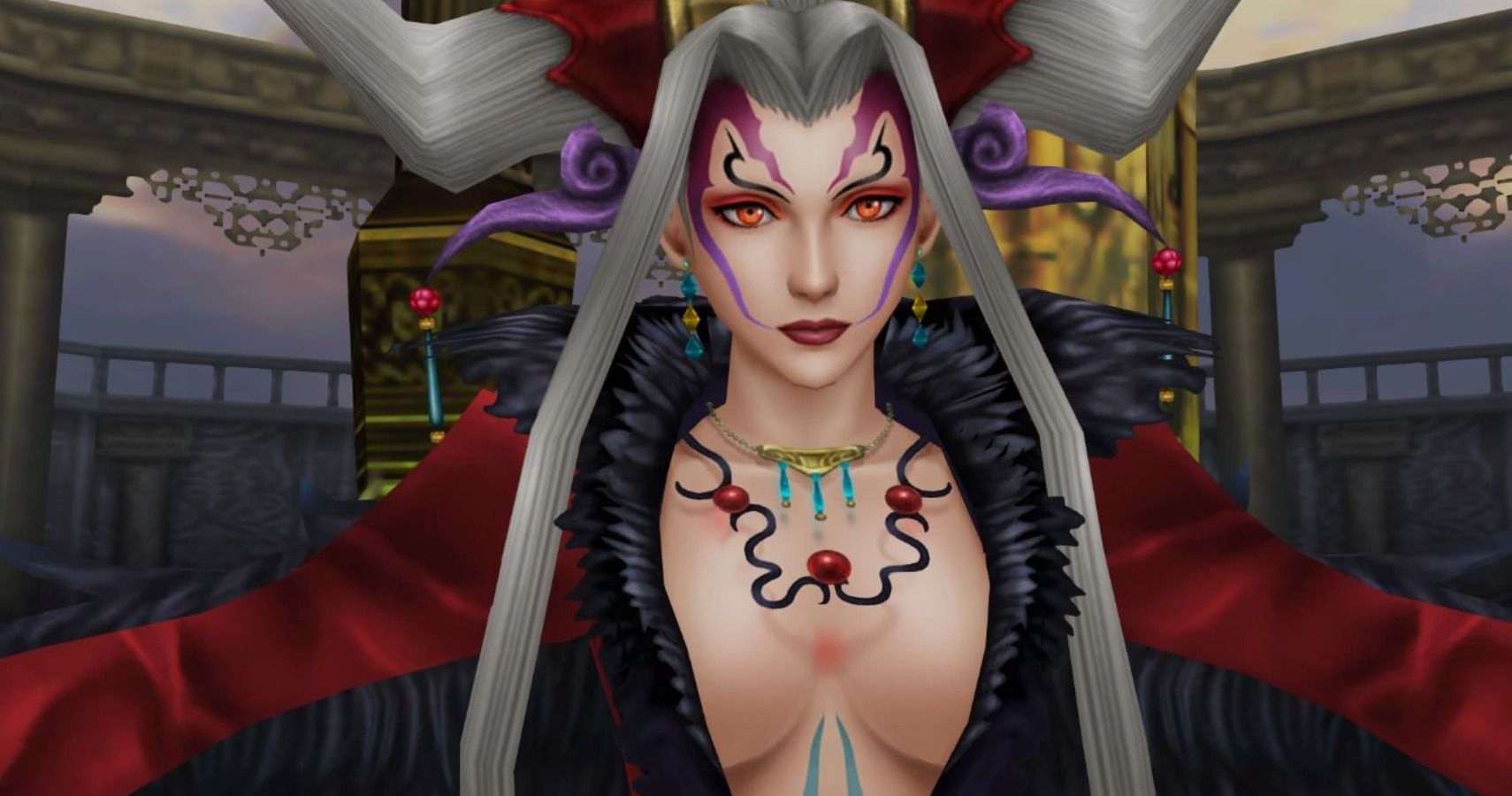Quick Links
From the opening moments of Final Fantasy 8, we can sense an unmistakable mystique surrounding the game's most instantly recognizable sorceress, Edea Kramer. FF8 starts with a grand several-minute CG sequence that blew minds in 1999 and remains iconic today.
Although the central conflict shown here involves protagonist Squall Leonhart duking it out with his rival, Seifer Almasy, some imagery interspersed in their duel depicts Edea, graceful and reaching for the sky, garbed in elegant attire. It leaves an impression, one that is only enhanced every time Squall and his friends encounter Edea throughout the story.
But who are the sorceresses in Final Fantasy 8? What ancient secrets do they harbor? And what makes them so mighty?
Knowing The Great Hyne
It is possible to play through the entirety of Final Fantasy 8, engaging in a fair amount of its optional content along the way, without knowing the first thing about the being known as Hyne. Hailed in reverence as the Great Hyne, and allegedly responsible for the creation of not just sorceresses but humanity itself, the figure is cloaked in mystery.
Unlike several other Final Fantasy titles, in which there is a sizable presence of religious worshipers toward a deity or being masquerading as such, we don't see much by way of religious practice whatsoever in the world of FF8. Coupled with the tense and unwavering stigma toward sorceresses, it's reasonable to assess that for all his (or its) supposed splendor, Hyne isn't necessarily revered.
In fact, the words used by our various sources seldom cut into the divine. Hyne is viewed as a god, to be sure, but more of a 'governor,' potentially killable, and from one source, downright 'lazy.'
The origins of our understanding stem from three distinct pieces. We'd say they're pieces of a puzzle, but for the fact that the third source feels the likeliest to tell the full picture. For the record, the first is an old man and child in the town of Balamb. This is most likely the sole source that many fans are familiar with. Here, it is understood that Hyne was quite strong, but after battling many monsters, grew tired and created mankind.
Per 'The Legend of Vascaroon', as told by our second source — a member of the Whtie SeeD organization — Hyne created humans as tools, slumbered, and awoke startled by how far and wide his creations had spread. He slaughtered the children to reduce their number but angered the surviving humans in the process, resulting in a war he could not win. He gave humanity half his body as a means of surrender, running away with the other half. Eventually, it was discovered that the half they'd received was effectively valueless.
Now, our attention tilts to the final source, one which can well and truly be called ultimate: Final Fantasy 8 scenario writer Kazushige Nojima, in the tell-all compendium called Final Fantasy 8 Ultimania.
Hyne In Hiding
The Final Fantasy 8 Ultimania contains an in-universe short story by Nojima involving a teacher explaining the identity and machinations of Hyne. While it should be emphasized that this is a story of Nojima's, it is also the most thorough and the best possible link to the origin of sorceresses within the game's world. For that purpose, we have elected to treat it as a perhaps exaggerated, perhaps entirely authentic, account.
When war broke out between kingdoms of mankind, as it often does in fiction and sad reality, a certain' dark king Zebalga' attempted to control the half of Hyne that the god had offered in the peace treaty. A sage named Vascaroon, indeed the very same from the tale recited by the White SeeD, concluded that Hyne had tricked humanity by giving them his discarded skin; the real power still rested firmly in Hyne's hands.
This is where things get interesting.
- However, the other half of Hyne's body was nowhere to be found. The humans began referring to the missing "Hyne" as "Hyne the Magician" and sought him for generations.
- It's to be expected that the "magic of Hyne" could not be found. Because of people's feelings at that time, it concealed itself in bodies, in the form of women, people who it was thought should be protected.
And so the sorceresses were born.
Children Of Hyne
Precisely what process Hyne used to determine the identities of the women "it thought should be protected" will likely never be known. Time marches forward, after all, and we doubt Final Fantasy 8 will ever receive a direct sequel or even a full-fledged spinoff. Whatever this decision entailed, it's clear that he gave unto them his very essence, which they then guarded fiercely, not wishing to spread it too thinly through the eons.
Importantly, only these select few women, who passed down their powers across the ages, can use magic naturally rather than through pacts with Guardian Force creatures. Thus, whilst honored in legend, they are "feared and persecuted" in truth — at least, by the point that the events of Final Fantasy 8 take place.
A greater number of women contain within them the potential to become sorceresses than have ever become sorceresses. When a sorceress is dying, as we see through clever flashbacks during FF8's ending, she seeks one of these women to pass down her powers. Without doing so, the sorceress cannot die peacefully, or else cannot die at all; as with several aspects of FF8's sorceresses, the truth between the two is frustratingly unclear.
Sorceresses As Antagonists, Or 'What's The Deal With Ultimecia?'
Knowing the past can only take one so far in understanding the fullness of Final Fantasy 8's story. After all, it is not Hyne who stands against Squall's team, or at least, not literally; it's Edea, and later Ultimecia.
But that's not quite right. Ultimecia is the villain from nearly the beginning, in fact. But how? The Sorceress Ultimecia, a woman from the future and the game's true villain, is capable of possessing the bodies of previous sorceresses. She does that with Edea most notably, reaching back in time far enough to cast a terrible spell and compress time itself. But Edea's own powers can extend only so far into the past as well, and so she needs Ellone, a girl who is surely fit for a sorceress' inheritance given her peculiar time-sensitive abilities.
Ultimecia's goal of reaching back into the distant past is forged in a desire to rule over time, and thus the planet's history and people in every sense, at every point. Naturally, being that this is a Final Fantasy game and not some grimdark dystopian discourse, Ultimecia is defeated. Even as she dies, however, she travels into the past to give Edea Kramer her powers, continuing the cycle of her own destruction forevermore.
As for Adel, a secondary antagonist within FF8's narrative, she is a separate being altogether, a different sorceress who conquered the advanced nation of Esthar and sought world domination (as these sorceresses seem to love so much). Her rule of Esthar is ironclad, but despite her considerable power, she is defeated by Squall and used for Ultimecia's purposes. Bum luck, then, Adel.





